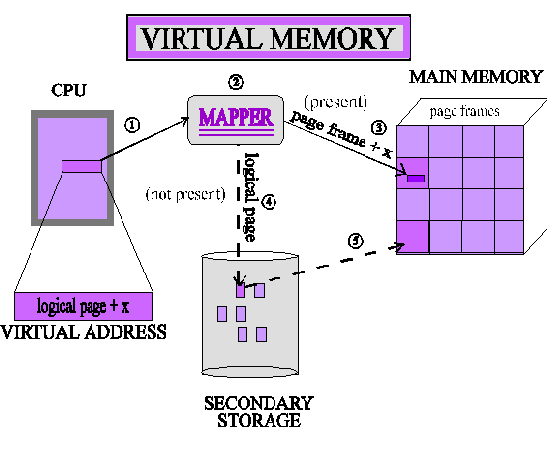Virtual Memory Management System is a
memory management application developed in Python scripting language.
The project aims at mapping memory addresses which have been used by
different programs. During memory management process, it implements both
hardware and software components. It hides the fragmentation memory
and makes the application programming easier.
The source code of Virtual Management
System is relatively short and easy to understand. Source code can be
accessed from the download links in this post. There is also a read me
file available in the download file. Below, I’ve introduced this
project in very brief explaining its abstract, scope and features.
About Virtual Memory Management System:

Virtual Memory Management System is an
integral part of computer architecture. It builds up the memory
management units into the CPU with the implementation of necessary
hardware. Virtual Memory is supported by most of the modern operating
systems. In such operating systems, each program has right to access
virtual memory.
Memory management is an important aspect
for faster and efficient running of a computer. During processing of
data, it may require a large volume of data to be stored on RAM (Random
Access Memory). And, it disturbs the computer from performing faster.
The use of Virtual Memory Management
System links active RAM and inactive memory on DASB (Direct Access
Storage Device) to form a large range of continuous addressing. As a
result of this, processing becomes easier.
If the Virtual Memory Management System
has been implemented on computer with small RAM, it gets activated
spontaneously when RAM is overloaded. Even the user doesn’t know when
the data is copied from RAM to hard disk. Most of the computers without
Virtual Memory and small RAM display error message or message to close
program when the RAM is overloaded.
Use of a software like this is
considered to be a good economic benefit to computers. At present market
rate, hard disk spaces are much cheaper than Random Access Memory (RAM)
chips. So, instead of adding up RAM in computers, it is better to
implement Virtual memory in low RAM computer.
Features:
The key features of Virtual Memory Management System Project can be outlined as:
- It implements both hardware and software during management of memory.
- The project prevents the programs from sudden closure when the RAM is full.
- It makes CPU (Central Processing Unit) store excess processing data on hard disk.
- It is an economic step in compute architecture.
Here’s the system architecture of the proposed application:

Conclusion:
Virtual Memory Management System is a
component of most operating system of desktop computer. It provides a
big benefit in memory management in low cost. Virtual Memory forms a
platform for easier application programming. New features can be added
into this application to make it a better one.